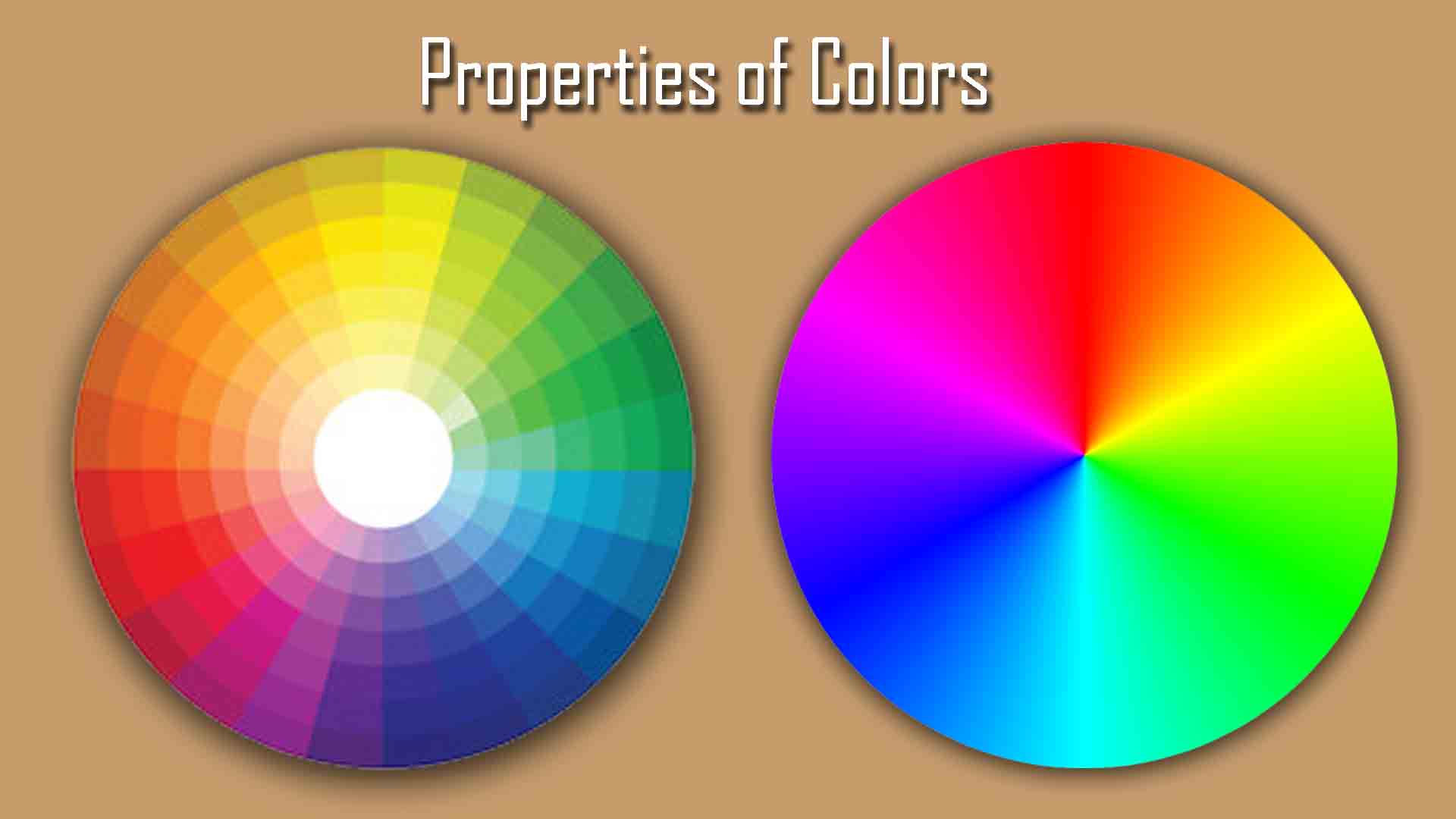

 Various Types of Colors
Various Types of Colors
Colors have several properties, including:
1. Hue: This refers to the basic color category, such as red, blue, or green. Hue is what distinguishes one color from another on the color wheel.
2. Saturation: Also known as chroma or intensity, saturatiwon refers to the purity or vividness of a color. Highly saturated colors are vivid and intense, while desaturated colors appear more muted or washed out.
3. Brightness: Also referred to as value or lightness, brightness describes how light or dark a color appears. Bright colors have a high brightness value, while dark colors have a low brightness value.
4. Temperature: Colors are often described as warm or cool based on their perceived temperature. Warm colors, such as reds, oranges, and yellows, evoke feelings of warmth and energy, while cool colors, such as blues, greens, and purples, are calming and soothing.
5. Complementary Colors: These are pairs of colors that are opposite each other on the color wheel. When placed next to each other, complementary colors create high contrast and can intensify each other.
6. Analogous Colors: Analogous colors are groups of colors that are adjacent to each other on the color wheel. They usually harmonize well together and create a sense of unity and cohesion.
7. Primary Colors: These are the base colors from which all other colors can be created. In traditional color theory, the primary colors are red, blue, and yellow.
8. Secondary Colors: These are created by mixing two primary colors together. The secondary colors are orange (red + yellow), green (yellow + blue), and purple (blue + red).
9. Tertiary Colors: These are created by mixing a primary color with a secondary color. Tertiary colors include variations like red-orange, yellow-green, and blue-purple.
Understanding these properties can help artists, designers, and anyone working with colors to effectively use them in their creations to evoke specific emotions, communicate messages, or create visual harmony.
Certainly! Here are some frequently asked questions about colors along with their answers:
1. What is color?
• Color is the visual perception resulting from the way an object reflects or emits light. It’s determined by the wavelengths of light that the object reflects, absorbs, or emits.
2. How do we see color?
• Our eyes contain specialized cells called cones, which are sensitive to different wavelengths of light. When light enters our eyes and strikes these cones, they send signals to our brain, which interprets them as colors.
3. What are primary colors?
• Primary colors are a set of colors that can be combined to create a wide range of other colors. In traditional color theory, the primary colors are red, blue, and yellow. However, in additive color mixing (such as with light), the primary colors are red, green, and blue.
4. What are complementary colors?
• Complementary colors are pairs of colors that, when combined, cancel each other out. When placed next to each other, they create strong contrast and enhance each other’s intensity. Examples include red and green, blue and orange, and yellow and purple.
5. What is the color wheel?
• The color wheel is a circular chart that shows the relationships between colors. It typically consists of primary, secondary, and tertiary colors arranged in a specific order.
6. What is color psychology?
• Color psychology is the study of how colors affect human behavior, emotions, and perceptions. Different colors can evoke different responses and have varying cultural and personal associations.
7. What is color blindness?
• Color blindness is a condition where an individual has difficulty distinguishing between certain colors. It’s often caused by a genetic deficiency in one or more types of cones in the eyes.
8. How do we create different colors?
• Colors can be created through various methods, including mixing pigments (subtractive color mixing), mixing light (additive color mixing), or manipulating digital color values.
9. What is the difference between hue, saturation, and brightness?
• Hue refers to the pure spectrum colors (e.g., red, green, blue). Saturation refers to the intensity or purity of a color, with fully saturated colors being vivid and desaturated colors being more muted. Brightness (or value) refers to the lightness or darkness of a color.
10. Why do colors evoke different emotions?
• Colors can evoke different emotions due to cultural associations, personal experiences, and biological factors. For example, red may be associated with passion or danger, while blue may evoke feelings of calmness or sadness.
These are just a few common questions about colors, but there’s so much more to explore in the fascinating world of color theory and perception!